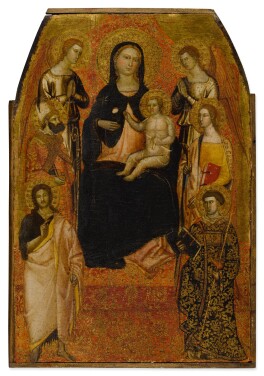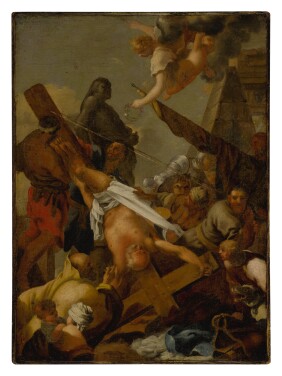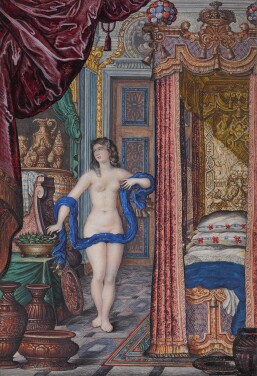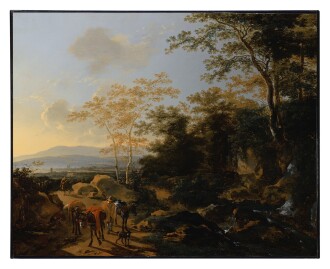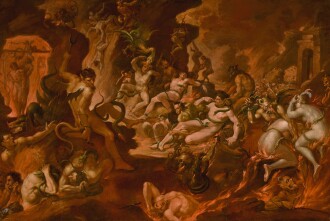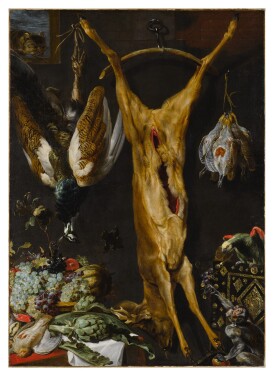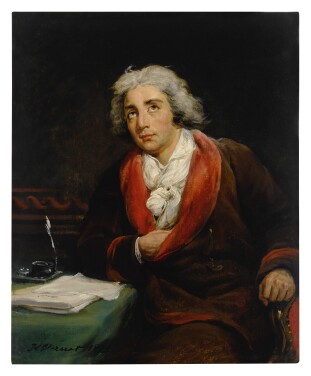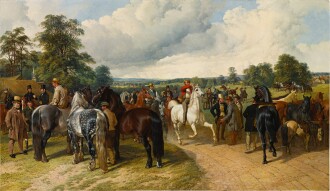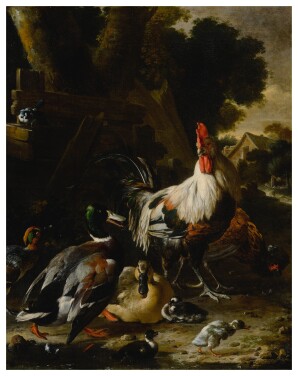S otheby's New York Masters Week 2021, taking place from 22-30 January, comprises seven sales of paintings, drawings, works of art and sculpture spanning across four centuries. The rich variety of genres represented in these auctions – ranging from still lifes and portraits to mythology and sporting scenes – present buyers with the perfect opportunity to start a comprehensive and informed collection of Old Masters works.
Understanding the unique history which underlies each subject category within the Old Masters canon is key to discerning an artwork's value in the evolving marketplace. Below, we've compiled a helpful guide to navigating this landscape, along with highlight lists of works from Master Paintings Part II, open for bidding at 10 AM EST on 22 January and closing at 10 AM EST on 30 January.
Religious Art
F
rom large frescoes in churches to small icons for private devotion, religion was an important theme for the Old Masters. Aside from the church being one of the wealthiest patrons for these artists, private collectors also coveted large paintings depicting narratives from the Old and New Testament. Overflowing with symbolism, these religious works are worth a second look.
Ancient History and Mythology
C lassical Greek and Roman history and mythology have inspired artists from the early Renaissance to the present, with tales of romance, heroism, tragedy and moral lessons learned by both gods and mortals. Along with religious subjects, historical and mythological scenes were categorized as history paintings and held the highest rank in the hierarchy of artistic genres throughout the early modern period. This fascination was stoked, in part, by a belief that Western society was returning to the state of greatness that the Roman Empire once held. These paintings required artists to be well-read in the classics and skilled in depicting the (often nude) human figure in complicated compositions.
Landscapes
L eonardo Da Vinci elevated landscape art by perfecting depth and adding atmospheric effects to his compositions through sfumato, a technique he used to soften transitions between colors. In the first phase of landscape painting during the Dutch Golden Age, many artists began focusing on the sky, diagonal paths and softened outlines. In a sign of landscape art’s popularity, subgenres emerged, such as Venetian vedute, maritime art and architectural fantasies.
Allegories
A
llegory, or a representation of an abstract or spiritual concept, has been used in all forms of art given its ability to illustrate complex ideas and concepts in a digestible way. Narratives in Old Masters overflow with hidden meanings through figures emblematic of deeper moral or spiritual meaning as life, death, love, virtue, or justice among others. The key to interpreting these paintings is to identify the allegorical figures, but even then the meaning can still remain elusive. Masters week offers collectors a wide range of allegories spanning from the Renaissance until the 1800s.
Genre Scenes
G enre paintings portray events from everyday life, like markets, domestic settings, interiors, lavish parties and street scenes. The figures represented could either be peasants or wealthy individuals. From the Dutch Golden Age to the French Rococo, depicting people engaged in common activities was very popular. The lively range of genre scenes in Old Masters Art make it an ideal collecting category for all clients.
Still Lifes
S
till life paintings depict predominantly inanimate objects, such as flowers, dead animals, plants, vases and glasses. This genre emerged in Western Europe mostly during the 16th century but gained popularity during the 1600s, when painters brought the movement to new heights. From decorative flower bouquets to realistic renderings of exotic animals, the range of still lifes offered in these sales provides collectors with an exciting opportunity to own detailed studies of the natural and man-made world.
Portraits
P rior to the introduction of photography in the early 1800s, paintings were one of the few ways to depict individuals. Since Old Master portraiture served as a means of self-promotion, these images may not always be the most accurate renderings of sitters. Reading the symbols hidden in portraiture is key, since depicting a lady as a mythological goddess helped elevate her beauty, while costumes, such as a military uniform decorated with regalia, are suggestive of the subject’s power. These lots offer clients the opportunity to own a portrait depicting an important historical figure who lived a fascinating life.
Sporting Art
W
hile the term “sporting art” came into use in the 18th and 19th centuries as a means to preserve the traditions and values of an old world, sporting art as a genre was popular in the 17th century as well. Hunting scenes with figures on horseback and still lifes of game, known as hunting trophies, both speak to the wealth of the rich patrons who could afford these pastimes. The timeless, idyllic image these works capture of country life make them ideal decorations for the walls of fine country homes, as they were once originally intended.
Explore all the artworks from Sotheby's Masters Week, taking place from 22 – 30 January.






